#China 🇨🇳
Explore tagged Tumblr posts
Text
The Sound of Empty Stomachs Is Louder Than Bombs: A Family in Gaza Calls for Your Help!❤️🩹

About a month ago, the price of a bag of flour increased to more than 100 shekels, which is approximately 300 dollars For us, this is impossible . For a month, we have been deprived of food 💔
Imagine yourself in my place ❤️🩹‼️
Help me buy 25 kilos of flour for my family before they die of hunger 🙏
donation ⬇️
https://gofund.me/5cd39587
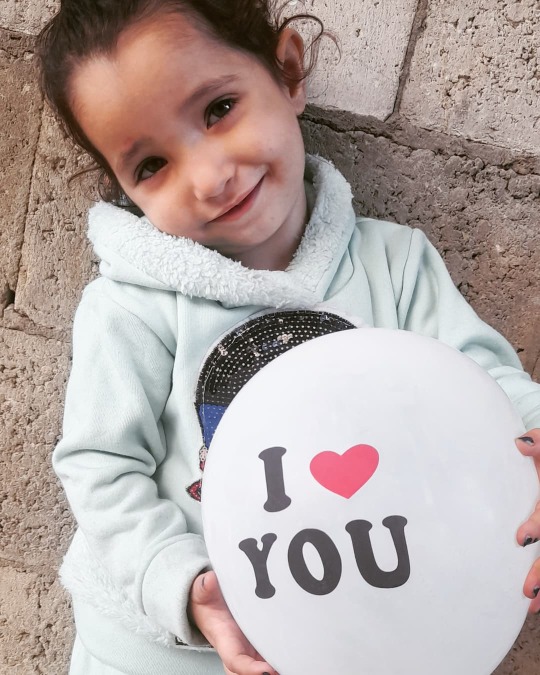
This is my little sister Sarah. She needs you. Don't ignore me and help me and Sarah❤️🩹
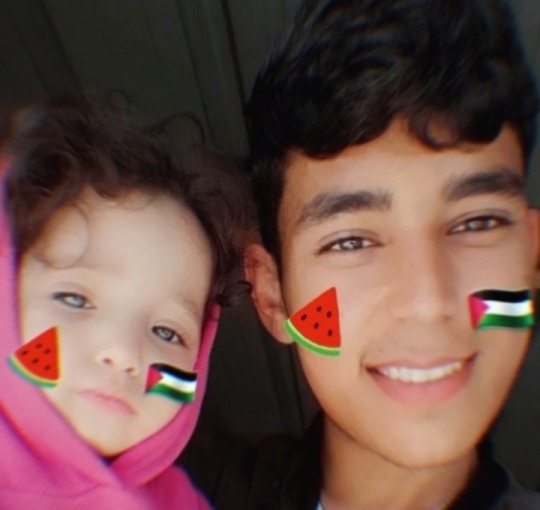
@ibtisam @riding-with-the-wild-hunt @fairuzfakhira @fallahsart @sayruq @humanvoreture @kaapstadgirly @sar-soor @dimonds456-art @plomegranate @commissions4aid-international @nabulsi @stil-macher @soon-palestine @communitythings @palestinegenocide @vakarian-shepard @kaapstadgirly @annoyingloudmicrowavecultist
@appsa @sayruq @stuckinapril @heritageposts
@palestina
@neptunering @feluka @malcriada
@queerstudiesnatural
@sar-soor @sayr @stuckinapril @heritageposts
@felumatsu @malcriada
@queerstudiesnatural @brutaliakhoa
#free palestine#free gaza#please help#gofundme#donations#gazaunderattack#palestinian genocide#gaza strip#save palestine#free palestine 🇵🇸#trans 🏳️⚧️#pro rq 🌈🍓#russia 🇷🇺#🇷🇺#america 🇺🇸#japan 🇯🇵#france 🇫🇷#vietnam 🇻🇳#china 🇨🇳#viral#cat#education
191 notes
·
View notes
Text
Help Heba family 👪 ❤️
A person is known among people by his actions, and the characteristics of a generous person are like his origin. So, you who are generous and kind, I ask of your great favor to console me in my ordeal. My life is deteriorating! It is heading towards the abyss at the speed of a train. I have lost control of everything. 💔🇵🇸
@90-ghost @riding @ibtisam @gazagfmboost @carnadelions @el-shab-hussein @elunarka @brutality @fairuzfan @buttercuparry
#free gaza#free palestine#heba-baker#save palestine#aid to gaza#artists on tumblr#comics#deadpool#fundraising#gaza#china 🇨🇳#free gaza 🇵🇸#free palestine 🇵🇸#i stand with palestine 🇵🇸#filistin 🇵🇸#from the river to the sea 🇵🇸#gaza strip#stop the war#war on gaza#support palestine#heba baker#please help#important#imane khelif#el shab hussein#illustration
105 notes
·
View notes
Text










@jaelomain
🇨🇳🇰🇭
511 notes
·
View notes
Text
For those wondering why the death of the 1st Amendment in America, the US TikTok ban, has not resulted in a surge here on Tumblr...
Our beloved Tumblr is banned in China.
Most TikTok users already tried Tumblr and didn't like it. (Look at how short their attention span is!)
Tumblr isn't great for 杀猪盘 or "pig butchering scam" -- hell, the Gaza scammers we do have can barely make a living off your broke-ass asses!
Let it be known:
*ahem*
Henceforth: my blog shall be crapping out queued posts for "Jan 19 anniversary of US TikTok ban day to all who celibrate" long after I'm dead and well into the next millennium...
#tiktok#tiktok ban#杀猪盘#rednote#red note#little red book#tiktok refugee#tiktok refugees#Xiaohongshu#app#app store#vpn#January 19#小红书国际版#小红书#china 🇨🇳#🇨🇳#ccp#cpc#prc#mao zedong#xi jinping#习近平#润之#毛泽东#小熊维尼#rest in peace first amendment; you will be missed...
31 notes
·
View notes
Text
Beautiful !!!!
Asian Sweet Eyes Candies 🍭💦❤️
#asian beauty#asian cutie#asian perfection#perfect body#beautiful face#beautiful asian women#curvy asian#asian perfect girl#hot chinese#thick chinese#sexy chinese#chinese sexy#chinese beauty#chinese model#chinese#china 🇨🇳#so beautiful#true beauty#pure beauty#beautiful women#wifey type#wifey material#dream wife
94 notes
·
View notes
Text
Love and Deepspace x KFC China





#love and deepspace#lads#lnds#l&ds#xavier#zayne#rafayel#sylus#;kfc#;collaborations#;offline events#;merchandise#shen xinghui#li shen#qin che#qi yu#seiya#rei#homura#shin#shim seonghun#lee seoeon#jinwoon#giwook#china 🇨🇳
44 notes
·
View notes
Text






Women's headdresses and jewelry, China 🇨🇳
#history #historyofart #historycal #historyfacts #historylovers #historyinpictures #historymade #historygeek #historyera #historyphoto #historyclass #historychannel #historylesson #historygram #historynerd #historytour #historyofphotography #historyplace #historylover #historyphotographed #historymatters #historyoffashion #historyiscool #arthistory #historical #historicalplaces #historicalpix #historicalclothing #historicalphotos #historicalromance #historicalmonument #historicalfacts #historicalart #historicalsnapshots #historicalphotography #historicalphoto #historicalpictures #historicalhome #historicalcenter #historicaldesign #historicalfantasy #historicalusociety
𝙵𝚊𝚋𝚕𝚎𝚜 & 𝙵𝚊𝚒𝚛𝚢𝚝𝚊𝚕𝚎𝚜 - 𝙳𝚎𝚗𝚒𝚣 𝙺𝚞𝚛𝚝𝚎𝚕 𝚁𝚎𝚖𝚒𝚡 𝚋𝚢 𝙽/𝚊, 𝚁𝚘𝚜𝚒𝚗𝚊 🎧

#l o v e#jewelry#China#6/2024#antique#aesthetic#fashion history#x-heesy#antique jewelry#jewelry art#history of fashion#head dresses#accessories#vintage#vintage fashion#history#fables#fairy aesthetic#fairy art#fairycore#now playing#music and art#fashion#fashion details#historical#clothes#china 🇨🇳#🇨🇳#asian
76 notes
·
View notes
Text

The latest exhibition back beautiful picture of J-15T😃
@Wenjian via X
19 notes
·
View notes
Text
It should be noted, Mao did not often purge people. This was not a common occurrence in China.

5 notes
·
View notes
Text
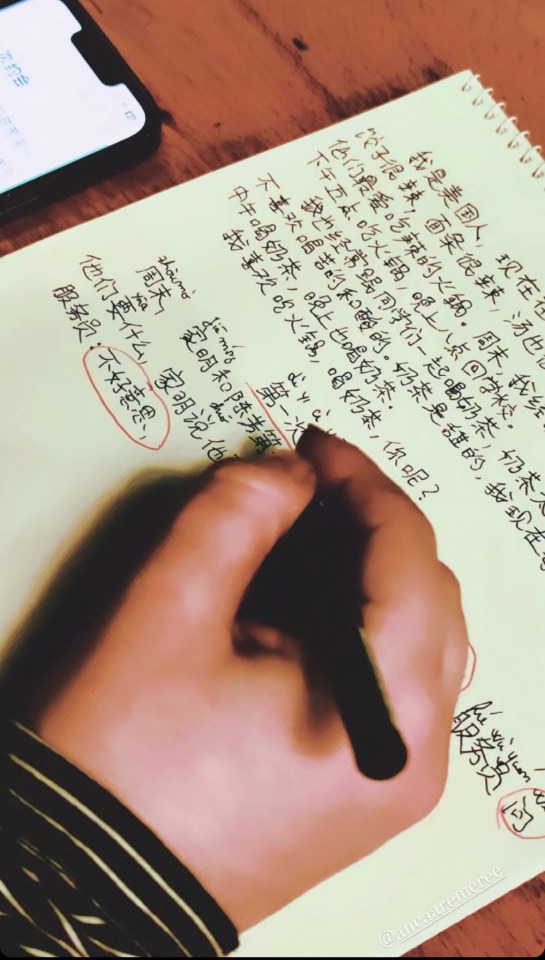
me and my emotional support learning of Mandarin Chinese
17 notes
·
View notes
Text
China might be based…
5 notes
·
View notes
Text
‼️What happens ‼️Can you imagine, my friend that one kilogram of firewood costs about $2? 😳
This is a difficult thing for us Because we have no source of income because of the war we are experiencing in Gaza
🍉‼️🍉‼️

Therefore, we resort to buying Bread from the bakery This thing is very difficult Because of the large numbers of people waiting at the bakery gate to get some bread ❤️🩹🥺Because of the large crowding of residents. It causes cases of suffocation and may cause death to sick people and children who are also waiting for bread 💔💔

Watch these children waiting at the gate of a bakery to get bread How sad this scene is These children are supposed to go to school, but because of the war, they were deprived of education and food as well.
I hope that you, friends, will help and donate a small amount to me so that I can help my family buy bread and firewood ‼️🍉❤️🩹
donation ⬇️
https://gofund.me/5cd39587
Please don't ignore me ‼️‼️‼️🍉
@the-silent-clay
@wearerofsocks
@catsonja
@artoatsblog
@wickedwitchofthewilds
@emberindigocymbee
@skiddlecat
@wdo-obw
@gromphadorhina
@starrysammie
@pigeondefender01
@insomniac-jay
@spago
@runawaywhorses
@comrademango
@aromperandsunnydaze-blog
@loonarmuunar
@tim-the-rat
@asviewabove
@here-sean-once-was
@pikslasrce
@heydreamchild
@kantimplora
@theottomek
@supremeladykhaos
@mistress--kanzaki
@heydreamchild
@the-anime-man
@reyesstrand
@soviet-space-ace
@tired-and-unjellied
@theclowninghour
@heavensmonsters-blog
@alwaysgazing
@auselesspileofmoss
@mc-tummy-blur
@giratina-and-the-skys-bouquet
@lopadopalis
@giratina-and-the-skys-bouquet
@impossibledial
@arcticat
@trixanimations
@m-llohi
@anassemblageofpassions
@lordzannis
@qattdraws
@11lovebullets
@theopalescent1
@impossibledial
@comrademango
#free palestine#gazaunderattack#free gaza#please help#viral#cat#education#korean#art#gofundme#donations#gaza strip#free palestine 🇵🇸#basketball#news#fyp#tumblr fyp#cars#america#beautiful#music#youtube#instagram#kpop#china 🇨🇳#russia 🇷🇺#trans 🏳️⚧️#🇷🇺#vietnam 🇻🇳#pro rq 🌈🍓
58 notes
·
View notes
Text

I reach out to you today with a heart heavy with both pain and hope,💔🥹 seeking your help to save my family from the horrors of war in Gaza. We are a family that includes women and children, living every day under the weight of fear and destruction. 🙏 I write to you because I believe that humanity and compassion are our shared strengths, and when we unite, we can achieve miracles. ❤️
Help Heba family 💔
@90-ghost @el-shab-hussein @nabulsi @ibtisam @aces-and-anime @gazagfmboost @riding
#free gaza#free palestine#heba-baker#save palestine#aid to gaza#artists on tumblr#comics#deadpool#gaza#fundraising#filistin 🇵🇸#free palestine 🇵🇸#free gaza 🇵🇸#china 🇨🇳#yemen#singapore#algeria#illustration#gaza strip
87 notes
·
View notes
Text










@jaelomain
🇨🇳🇰🇭
242 notes
·
View notes
Text
The First Light of Trinity
— By Alex Wellerstein | July 16, 2015 | Annals of Technology
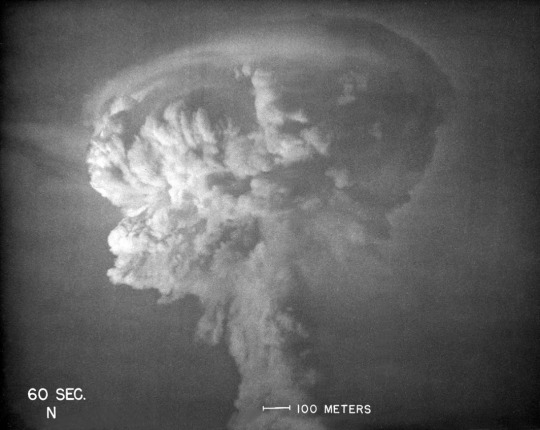
Seventy years ago, the flash of a nuclear bomb illuminated the skies over Alamogordo, New Mexico. Courtesy Los Alamos National Laboratory
The light of a nuclear explosion is unlike anything else on Earth. This is because the heat of a nuclear explosion is unlike anything else on Earth. Seventy years ago today, when the first atomic weapon was tested, they called its light cosmic. Where else, except in the interiors of stars, do the temperatures reach into the tens of millions of degrees? It is that blistering radiation, released in a reaction that takes about a millionth of a second to complete, that makes the light so unearthly, that gives it the strength to burn through photographic paper and wound human eyes. The heat is such that the air around it becomes luminous and incandescent and then opaque; for a moment, the brightness hides itself. Then the air expands outward, shedding its energy at the speed of sound—the blast wave that destroys houses, hospitals, schools, cities.
The test was given the evocative code name of Trinity, although no one seems to know precisely why. One theory is that J. Robert Oppenheimer, the head of the U.S. government’s laboratory in Los Alamos, New Mexico, and the director of science for the Manhattan Project, which designed and built the bomb, chose the name as an allusion to the poetry of John Donne. Oppenheimer’s former mistress, Jean Tatlock, a student at the University of California, Berkeley, when he was a professor there, had introduced him to Donne’s work before she committed suicide, in early 1944. But Oppenheimer later claimed not to recall where the name came from.
The operation was designated as top secret, which was a problem, since the whole point was to create an explosion that could be heard for a hundred miles around and seen for two hundred. How to keep such a spectacle under wraps? Oppenheimer and his colleagues considered several sites, including a patch of desert around two hundred miles east of Los Angeles, an island eighty miles southwest of Santa Monica, and a series of sand bars ten miles off the Texas coast. Eventually, they chose a place much closer to home, near Alamogordo, New Mexico, on an Army Air Forces bombing range in a valley called the Jornada del Muerto (“Journey of the Dead Man,” an indication of its unforgiving landscape). Freshwater had to be driven in, seven hundred gallons at a time, from a town forty miles away. To wire the site for a telephone connection required laying four miles of cable. The most expensive single line item in the budget was for the construction of bomb-proof shelters, which would protect some of the more than two hundred and fifty observers of the test.
The area immediately around the bombing range was sparsely populated but not by any means barren. It was within two hundred miles of Albuquerque, Santa Fe, and El Paso. The nearest town of more than fifty people was fewer than thirty miles away, and the nearest occupied ranch was only twelve miles away—long distances for a person, but not for light or a radioactive cloud. (One of Trinity’s more unusual financial appropriations, later on, was for the acquisition of several dozen head of cattle that had had their hair discolored by the explosion.) The Army made preparations to impose martial law after the test if necessary, keeping a military force of a hundred and sixty men on hand to manage any evacuations. Photographic film, sensitive to radioactivity, was stowed in nearby towns, to provide “medical legal” evidence of contamination in the future. Seismographs in Tucson, Denver, and Chihuahua, Mexico, would reveal how far away the explosion could be detected.
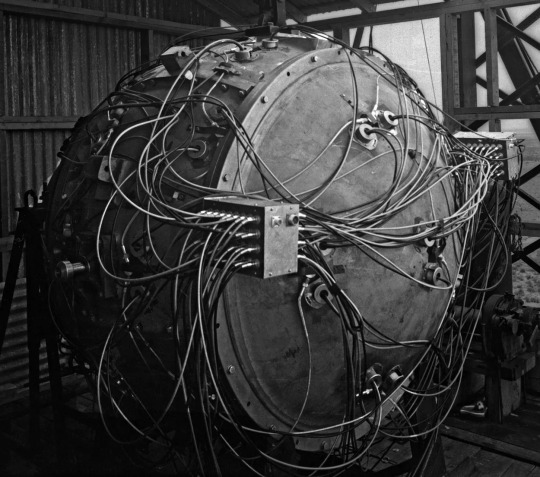
The Trinity test weapon. Courtesy Los Alamos National Laboratory
On July 16, 1945, the planned date of the test, the weather was poor. Thunderstorms were moving through the area, raising the twin hazards of electricity and rain. The test weapon, known euphemistically as the gadget, was mounted inside a shack atop a hundred-foot steel tower. It was a Frankenstein’s monster of wires, screws, switches, high explosives, radioactive materials, and diagnostic devices, and was crude enough that it could be tripped by a passing storm. (This had already happened once, with a model of the bomb’s electrical system.) Rain, or even too many clouds, could cause other problems—a spontaneous radioactive thunderstorm after detonation, unpredictable magnifications of the blast wave off a layer of warm air. It was later calculated that, even without the possibility of mechanical or electrical failure, there was still more than a one-in-ten chance of the gadget failing to perform optimally.
The scientists were prepared to cancel the test and wait for better weather when, at five in the morning, conditions began to improve. At five-ten, they announced that the test was going forward. At five-twenty-five, a rocket near the tower was shot into the sky—the five-minute warning. Another went up at five-twenty-nine. Forty-five seconds before zero hour, a switch was thrown in the control bunker, starting an automated timer. Just before five-thirty, an electrical pulse ran the five and a half miles across the desert from the bunker to the tower, up into the firing unit of the bomb. Within a hundred millionths of a second, a series of thirty-two charges went off around the device’s core, compressing the sphere of plutonium inside from about the size of an orange to that of a lime. Then the gadget exploded.
General Thomas Farrell, the deputy commander of the Manhattan Project, was in the control bunker with Oppenheimer when the blast went off. “The whole country was lighted by a searing light with the intensity many times that of the midday sun,” he wrote immediately afterward. “It was golden, purple, violet, gray, and blue. It lighted every peak, crevasse, and ridge of the nearby mountain range with a clarity and beauty that cannot be described but must be seen to be imagined. It was that beauty the great poets dream about but describe most poorly and inadequately.” Twenty-seven miles away from the tower, the Berkeley physicist and Nobel Prize winner Ernest O. Lawrence was stepping out of a car. “Just as I put my foot on the ground I was enveloped with a warm brilliant yellow white light���from darkness to brilliant sunshine in an instant,” he wrote. James Conant, the president of Harvard University, was watching from the V.I.P. viewing spot, ten miles from the tower. “The enormity of the light and its length quite stunned me,” he wrote. “The whole sky suddenly full of white light like the end of the world.”

In its first milliseconds, the Trinity fireball burned through photographic film. Courtesy National Archives and Records Administration
Trinity was filmed exclusively in black and white and without audio. In the main footage of the explosion, the fireball rises out of the frame before the cameraman, dazed by the sight, pans upward to follow it. The written accounts of the test, of which there are many, grapple with how to describe an experience for which no terminology had yet been invented. Some eventually settle on what would become the standard lexicon. Luis Alvarez, a physicist and future participant in the Hiroshima bombing, viewed Trinity from the air. He likened the debris cloud, which rose to a height of some thirty thousand feet in ten minutes, to “a parachute which was being blown up by a large electric fan,” noting that it “had very much the appearance of a large mushroom.” Charles Thomas, the vice-president of Monsanto, a major Manhattan Project contractor, observed the same. “It looked like a giant mushroom; the stalk was the thousands of tons of sand being sucked up by the explosion; the top of the mushroom was a flowering ball of fire,” he wrote. “It resembled a giant brain the convolutions of which were constantly changing.”
In the months before the test, the Manhattan Project scientists had estimated that their bomb would yield the equivalent of between seven hundred and five thousand tons of TNT. As it turned out, the detonation force was equal to about twenty thousand tons of TNT—four times larger than the expected maximum. The light was visible as far away as Amarillo, Texas, more than two hundred and eighty miles to the east, on the other side of a mountain range. Windows were reported broken in Silver City, New Mexico, some hundred and eighty miles to the southwest. Here, again, the written accounts converge. Thomas: “It is safe to say that nothing as terrible has been made by man before.” Lawrence: “There was restrained applause, but more a hushed murmuring bordering on reverence.” Farrell: “The strong, sustained, awesome roar … warned of doomsday and made us feel that we puny things were blasphemous.” Nevertheless, the plainclothes military police who were stationed in nearby towns reported that those who saw the light seemed to accept the government’s explanation, which was that an ammunition dump had exploded.
Trinity was only the first nuclear detonation of the summer of 1945. Two more followed, in early August, over Hiroshima and Nagasaki, killing as many as a quarter of a million people. By October, Norris Bradbury, the new director of Los Alamos, had proposed that the United States conduct “subsequent Trinity’s.” There was more to learn about the bomb, he argued, in a memo to the new coördinating council for the lab, and without the immediate pressure of making a weapon for war, “another TR might even be FUN.” A year after the test at Alamogordo, new ones began, at Bikini Atoll, in the Marshall Islands. They were not given literary names. Able, Baker, and Charlie were slated for 1946; X-ray, Yoke, and Zebra were slated for 1948. These were letters in the military radio alphabet—a clarification of who was really the master of the bomb.
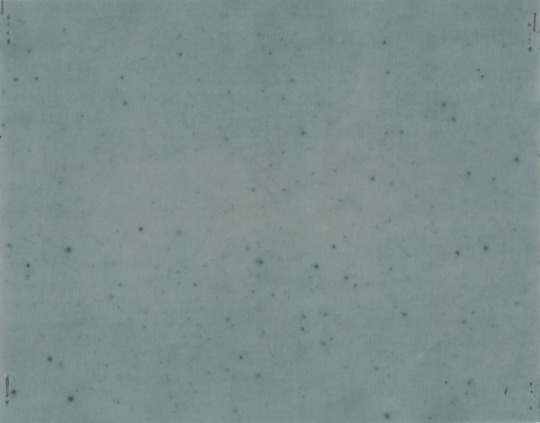
Irradiated Kodak X-ray film. Courtesy National Archives and Records Administration
By 1992, the U.S. government had conducted more than a thousand nuclear tests, and other nations—China, France, the United Kingdom, and the Soviet Union—had joined in the frenzy. The last aboveground detonation took place over Lop Nur, a dried-up salt lake in northwestern China, in 1980. We are some years away, in other words, from the day when no living person will have seen that unearthly light firsthand. But Trinity left secondhand signs behind. Because the gadget exploded so close to the ground, the fireball sucked up dirt and debris. Some of it melted and settled back down, cooling into a radioactive green glass that was dubbed Trinitite, and some of it floated away. A minute quantity of the dust ended up in a river about a thousand miles east of Alamogordo, where, in early August, 1945, it was taken up into a paper mill that manufactured strawboard for Eastman Kodak. The strawboard was used to pack some of the company’s industrial X-ray film, which, when it was developed, was mottled with dark blotches and pinpoint stars—the final exposure of the first light of the nuclear age.
#Hiroshima | Japan 🇯🇵 | John Donne | Manhattan Project | Monsanto#Nagasaki | Japan 🇯🇵 | Nuclear Weapons | Second World War | World War II#The New Yorker#Alex Wellerstein#Los Alamos National Laboratory#New Mexico#J. Robert Oppenheimer#John Donne#Jean Tatlock#University of California Berkeley#Jornada del Muerto | Journey of the Dead Man#General Thomas Farrell#Nobel Prize Winner Physicist Ernest O. Lawrence#Luis Alvarez#US 🇺🇸#China 🇨🇳#France 🇫🇷#Soviet Union (Now Russia 🇷🇺)#Alamogordo | New Mexico#Eastman Kodak#Nuclear Age
39 notes
·
View notes
Text
⭐ Love and Deepspace x KFC China Collaboration ⭐
Welcome to K Lounge, Xavier—"Star-Level Egg Tart Specialist." Trailer Video: Xavier 🍦🍔🍟🥧
#love and deepspace#lads#lnds#l&ds#;kfc#;collaborations#;offline events#xavier#shim seonghun#shen xinghui#seiya#china 🇨🇳
32 notes
·
View notes